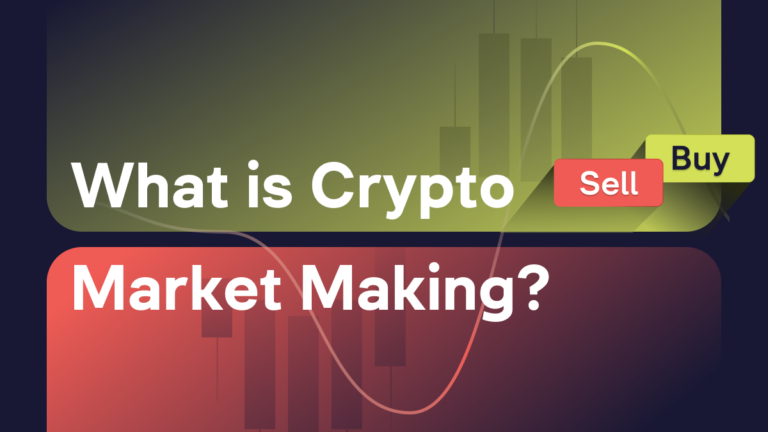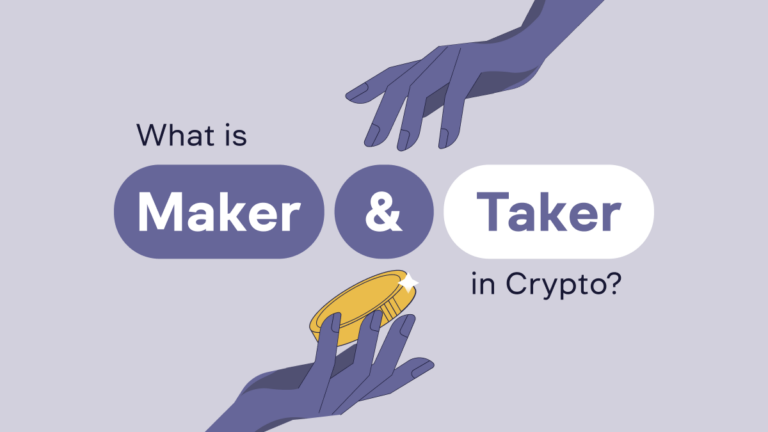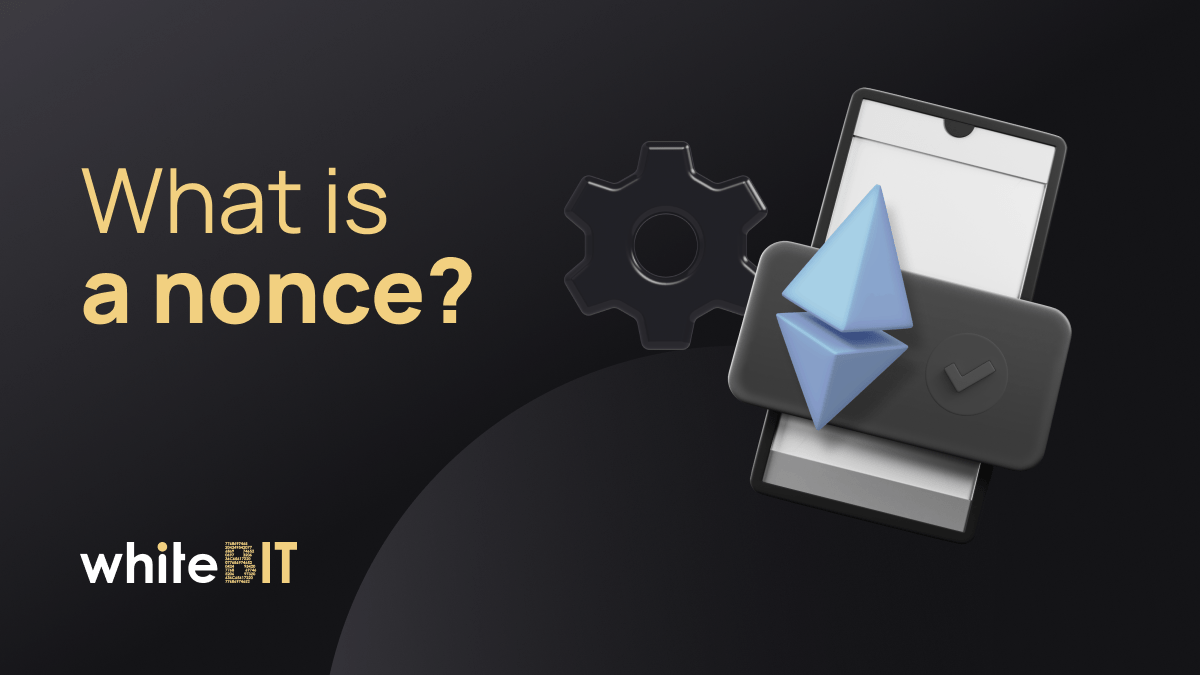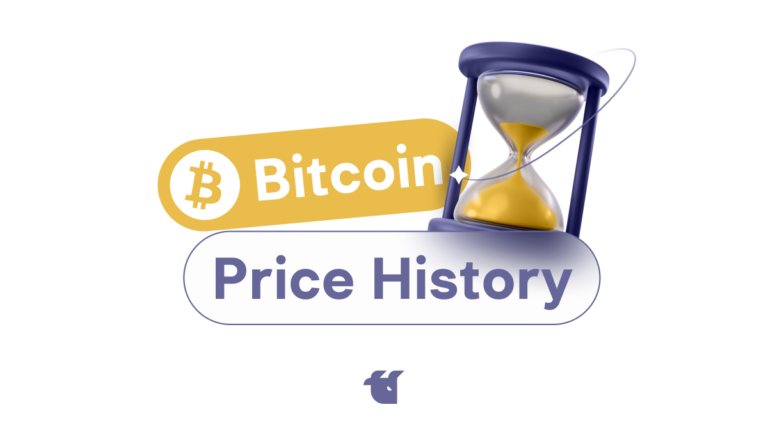What is AMM (Automated Market Makers) in DeFi
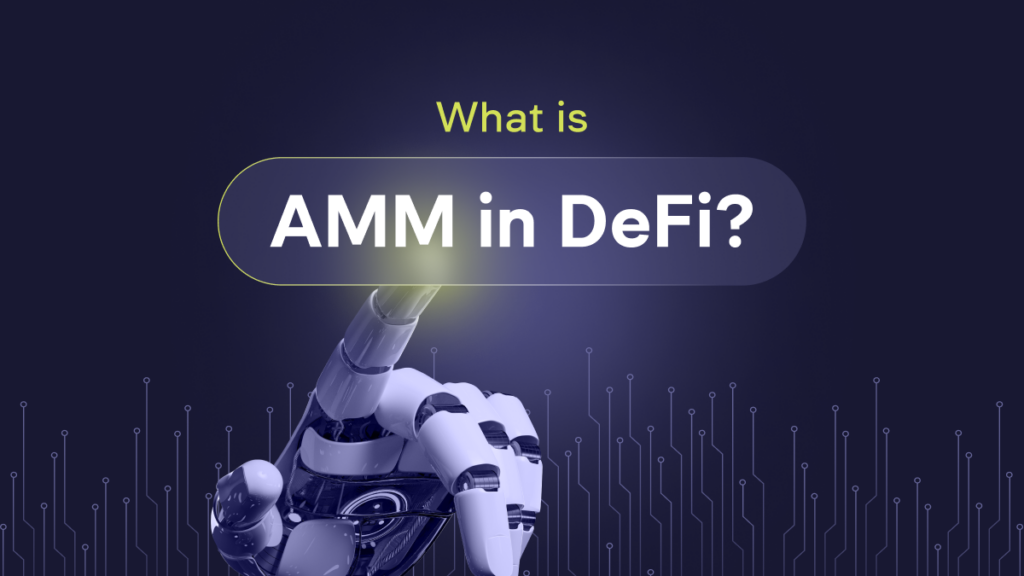
Content
- What Is Market Making?
- What is an AMM (Automated Market Maker) in Crypto
- How does AMM Work
- Do AMMs Support Fiat-to-Crypto Trading?
- Examples of Automated Market Maker Protocols
- What Are Liquidity Pools and Liquidity Providers (LPs)
- Role of Smart Contracts
- Features of AMMs
- Risks and Challenges of AMMs
- What Are the Different Automated Market Maker (AMM) Models
- Improving AMM Models With Hybrid, Dynamic, Proactive, and Virtual Solutions
- Pros and Cons of AMMs
- Order Book vs AMM
- Future of AMMs
- Conclusion
- FAQ
Automated Market Makers (AMMs) have emerged as a cornerstone in the growing DeFi (Decentralized Finance) market, changing the basics of assets trading in a decentralized environment.
Unlike traditional market-making mechanisms, which rely on order books and human market makers to perform trades, AMMs employ a unique algorithmic approach.
This innovation not only eases access to financial markets but also enhances liquidity and trading efficiency in the DeFi ecosystem.
What Is Market Making?
At its core, market making is the process of providing liquidity to a financial market. Traditional market makers are typically firms or individuals who stand ready to buy and sell assets at consistent prices, profiting from the spread between buying and selling prices.
In the DeFi world, AMMs replace these traditional entities with smart contracts. These smart contracts hold liquidity pools of various tokens, allowing users to trade against this pooled liquidity rather than with individual counterparties.
What is an AMM (Automated Market Maker) in Crypto
An Automated Market Maker (AMM) in the crypto world is a type of decentralized exchange protocol that relies on a mathematical formula to price assets. Instead of using traditional order books like conventional exchanges, AMMs utilize smart contracts to create liquidity pools.
These pools facilitate trading by automatically executing trades based on preset algorithms, embodying what does AMM stand for. This innovation has significantly broadened the scope of DeFi (Decentralized Finance), allowing for more accessible, efficient, and secure trading within the crypto ecosystem.
How does AMM Work
Automated Market Making works through the creation of liquidity pools. These pools are funded by users who deposit their tokens into a smart contract. In return, they receive liquidity tokens, which represent their share of the pool.
When a trade occurs, the AMM uses a predefined algorithm, often based on the constant product formula, to determine the price of the assets being traded. This mechanism allows for decentralized trading within the AMM cryptocurrency ecosystem, eliminating the need for traditional order books and enabling a more fluid exchange of assets.
- Liquidity Provision. Users deposit pairs of tokens into a liquidity pool, which is governed by a smart contract.
- Price Determination. The AMM sets prices based on a mathematical formula, usually relying on the ratio of the tokens in the pool.
- Trading and Swapping. Users interact with the liquidity pool to swap tokens. The AMM automatically facilitates these trades, adjusting the price based on the pool’s changing composition after each trade.
- Incentivization. To encourage users to provide liquidity, AMMs often offer incentives like a share of the transaction fees or other rewards.
Do AMMs Support Fiat-to-Crypto Trading?
Automated Market Makers (AMMs) primarily focus on the exchange of crypto-to-crypto pairs within the DeFi ecosystem. The structure of AMMs is inherently designed for tokenized assets, which seamlessly integrate with the underlying smart contract technology.
However, integrating fiat-to-crypto trading into this framework presents challenges, primarily due to the regulatory and logistical complexities associated with fiat currencies.
- Regulatory Challenges. National currencies are subject to governmental and banking regulations, which can be at odds with the decentralized nature of blockchain and DeFi platforms.
- Technical Barriers. National currencies cannot be directly used in smart contracts as they are not tokenized. This necessitates the use of stablecoins or other digital representations of national currency for on-chain transactions.
Despite these challenges, some DeFi platforms are exploring bridges between national currency and crypto by collaborating with regulated entities to offer fiat gateways. These gateways convert national currency to a stablecoin or a tokenized version of the fiat, which can then be used in AMM protocols.
Examples of Automated Market Maker Protocols
WhiteSwap serves as a prime example of an Automated Market Maker (AMM) protocol within the decentralized finance (DeFi) sector. Operating on the Ethereum blockchain, WhiteSwap exemplifies the core principles of AMMs and their role in facilitating decentralized trading. Here’s an overview of its key features:
- Decentralized Exchange Platform. WhiteSwap operates as a decentralized exchange (DEX), allowing users to trade various cryptocurrencies without traditional intermediaries.
- Liquidity Pools and Provision. Users contribute to liquidity pools, receiving liquidity pair tokens in return. This mechanism ensures constant liquidity on the platform.
- Yield Farming and Staking Opportunities. WhiteSwap offers yield farming, enabling users to stake tokens in pools to earn rewards. Staking the native WSD tokens also yields rewards from the platform’s trading fees.
- Automated Market Making System. Utilizing an AMM model, WhiteSwap determines asset values based on a mathematical formula that considers the assets in the liquidity pool, diverging from traditional supply and demand mechanics.
- Governance Token (WSD). WSD token holders participate in the platform’s governance, influencing decisions and voting on proposals for its future development.
- Cross-Blockchain Functionality. Initially focused on the Ethereum blockchain, WhiteSwap aims to extend its functionalities across other blockchain networks like Tron and Polygon.
- Incentivization and Community Focus. The platform incentivizes participation through liquidity mining campaigns and other rewards, promoting active community involvement in its governance and operations.
- Enhanced Security and Accessibility. By not storing user assets directly and enabling the creation of new liquidity pools, WhiteSwap ensures a secure and accessible trading environment.
WhiteSwap’s approach to decentralized trading and liquidity provision illustrates the innovative capabilities of AMMs in the DeFi space. Its governance model, incentivization strategies, and focus on cross-blockchain operability highlight the evolving nature of AMMs in catering to diverse needs within the cryptocurrency ecosystem.
What Are Liquidity Pools and Liquidity Providers (LPs)
Liquidity pools are at the heart of AMM platforms like WhiteSwap, functioning as the core mechanism that enables these automated money makers to facilitate trading by providing liquidity. They are essentially reservoirs of tokens locked in a smart contract, used to facilitate trading by providing liquidity.
Users, known as Liquidity Providers (LPs), contribute their assets to these pools and, in return, receive LP tokens. These tokens represent their share of the pool and can be redeemed later for their portion of the pool plus any accrued fees.
Mechanism of Liquidity Provision
The process of liquidity provision involves depositing an equivalent value of two different tokens into a pool. This action helps create a market for these tokens on the AMM platform.
In exchange, LPs receive LP tokens, which can fluctuate in value based on the trading activity and the overall performance of the liquidity pool.
Risks for LPs
While providing liquidity can be rewarding, it also contains risks. One significant risk is impermanent loss, which occurs when the price of tokens in a pool changes compared to when they were deposited.
This change can lead to a situation where the value of the tokens at withdrawal is less than if the LP had just held onto the tokens. Other risks include smart contract vulnerabilities and changes in the overall liquidity of the pool.
Role of Smart Contracts
Smart contracts are integral to the functioning of AMMs and liquidity pools. They are self-executing contracts with the terms of the agreement directly written into code. In the context of AMMs, smart contracts are useful because of:
- Automating trades. Smart contracts automatically execute trades based on predefined rules and algorithms, without the need for an intermediary.
- Managing liquidity pools. They govern how liquidity is added or removed from the pools and determine how trading fees are distributed among LPs.
- Ensuring security and trust. Since they are based on blockchain technology, smart contracts provide a secure and transparent environment for transactions, reducing the risk of fraud and errors.
- Facilitating decentralization. By removing the need for central authority or intermediaries, smart contracts allow for a truly decentralized trading experience, aligning with the ethos of DeFi.
Price Discovery Mechanisms
Price discovery in Automated Market Makers (AMMs) differs fundamentally from traditional financial markets. In AMMs, prices are not set through an order book but are determined algorithmically based on the assets in the liquidity pools.
These pools, filled with different tokens, adjust prices dynamically according to the changing ratios of assets. This system ensures that the pricing is reflective of current market conditions, driven by supply and demand within the pool.
Features of AMMs
Automated Market Makers (AMMs) have become a defining feature of the DeFi (Decentralized Finance) world, offering a unique approach to asset trading in the cryptocurrency world. Here are some key features:
- Decentralized
AMMs are the essence of decentralization in finance. Unlike traditional exchanges, there’s no central authority controlling the market. This decentralization is integral to the ethos of DeFi, ensuring that the system is more resistant to censorship and central points of failure.
- Use of Smart Contracts
At the heart of every AMM is smart contract technology. These contracts automate the market-making process, allowing for the automatic execution of trades. This automation eliminates the need for intermediaries, making the process more efficient.
- Non-Custodial Framework
AMMs operate on a non-custodial model. Users retain control of their assets until the moment of trade, reducing the risk associated with handing over assets to a third party.
- Secure
While no system is entirely risk-free, AMMs are designed with strict security protocols. The use of blockchain technology ensures that all transactions are transparent and unchangeable.
- Zero Price Manipulation
Since prices in AMMs are determined algorithmically based on liquidity pool ratios, there’s less room for price manipulation typically seen in order book-based markets. This setup provides a more equitable trading environment.
Risks and Challenges of AMMs
Despite their innovative approach and benefits, AMMs also come with their own set of risks and challenges:
- Security Concerns
Smart contracts are the basis of AMMs, but they are not 100% proof to risks. There’s always a possibility of bugs or vulnerabilities in the contract code, which can lead to security breaches.
- Market Volatility
AMMs can be vulnerable to market volatility. The pricing mechanism in AMMs, while usually efficient, in some cases may lead to issues like impermanent loss for liquidity providers, particularly in highly volatile market conditions.
What Are the Different Automated Market Maker (AMM) Models
Automated Market Makers (AMMs) have evolved with various models, each addressing specific needs and challenges in the DeFi space. Here’s an overview of some prominent AMM models.
Constant Product Market Maker (CPMM)
The CPMM model uses the formula x * y = k to maintain a constant product between the quantities of two assets in a liquidity pool. This model provides high liquidity and is resistant to large price slippages, but can be vulnerable to impermanent loss.
Constant Sum Market Maker (CSMM)
The CSMM model maintains a constant sum of the assets in the pool (x + y = k). This model is simple but rarely used in practice due to its susceptibility to price manipulation and low liquidity in larger trades.
Constant Mean Market Maker (CMMM)
The CMMM is a generalized version of the CPMM. It allows for pools with more than two types of assets and uses a weighted geometric mean to maintain balance. This model can offer more flexibility and better capital efficiency for multi-asset pools.
Problems of First-Generation AMM Models
While first-generation AMM models have been groundbreaking, they come with inherent problems.
Impermanent Loss
This phenomenon occurs when the price of assets in a liquidity pool changes compared to when they were deposited, potentially leading to losses for liquidity providers if they withdraw their assets during price disparities.
Low Capital Efficiency
Initial AMM models often suffer from low capital efficiency, meaning that a large portion of capital in liquidity pools is not utilized effectively, leading to lesser returns for liquidity providers.
Improving AMM Models With Hybrid, Dynamic, Proactive, and Virtual Solutions
In response to these challenges, developers have come up with the solutions for new AMM models.
Hybrid CFMMs
Hybrid Constant Function Market Makers (CFMMs) combine elements of different AMM models to optimize for both liquidity provision and price stability, aiming to reduce issues like impermanent loss.
Dynamic Automated Market Maker (DAMM)
DAMMs adjust their pricing and liquidity provision strategies dynamically based on market conditions, aiming to offer better capital efficiency and reduced price impact.
Proactive Market Maker (PMM)
PMMs work by adjusting their prices in response to real-world market trends and expert predictions. The goal of PMMs is to ensure that the prices on these platforms reflect what’s happening in the wider financial market.
Virtual Automated Market Makers (vAMM)
vAMMs do not hold actual assets but use mathematical formulas to simulate trading and liquidity provision. They are primarily used in derivative platforms to enable trading without the need for traditional counterparts.
Pros and Cons of AMMs
AMMs have both advantages and challenges.
AMM Pros
- Decentralization. They operate in a decentralized manner, reducing the need for intermediaries.
- Accessibility. AMMs provide easy access to liquidity and trading opportunities for a wide range of assets.
- Innovation. They have spurred a range of financial innovations in the DeFi space.
AMM Cons
- Impermanent Loss. One of the significant risks for liquidity providers in AMM platforms.
- Scalability and Efficiency Issues. Early models of AMMs face challenges in terms of capital efficiency and scalability.
- Security Risks. As with any blockchain-based technology, there are inherent risks related to smart contract vulnerabilities.
Advantages and disadvantages of using AMM
| Advantages of Using AMM | Disadvantages of Using AMM |
| Decentralization
Operates without central authority, enhancing censorship resistance and reducing reliance on intermediaries. |
Impermanent Loss
Risk of losses for liquidity providers when the price of deposited assets changes unfavorably. |
| Accessibility.
Provides easy and open access to liquidity and trading, making it user-friendly for a wide audience. |
Scalability and Efficiency Issues
Early AMM models often face challenges in efficiently using the capital in liquidity pools. |
| Innovation.
Drives financial innovation in the DeFi space, leading to the development of new financial tools and services. |
Security Risks
Potential for smart contract vulnerabilities and security breaches, inherent in blockchain-based technologies. |
Order Book vs AMM
Order book systems and Automated Market Makers (AMMs) are two distinct mechanisms for facilitating trades in the crypto markets.
Order Book
Trades are made through an order book, which lists all buy and sell orders. Prices are determined by the highest price a buyer is willing to pay (bid) and the lowest price a seller is willing to accept (ask).
The main advantage is the transparency in price formation and depth of the market. However, it relies heavily on the presence of buyers and sellers to maintain liquidity.
AMM
In contrast, AMMs, prevalent in DeFi, use algorithms to set prices and facilitate trades. Liquidity is provided by pools of tokens, not by individual buyers and sellers.
This model ensures continuous liquidity, but can lead to issues like impermanent loss.
Role of AMMs in DeFi
AMMs play a critical role in DeFi by:
- Enhancing Liquidity. They ensure that assets can be traded at any time, even in the absence of a direct counterparty.
- Promoting Inclusivity. Anyone can become a liquidity provider, democratizing access to market-making opportunities.
- Facilitating Token Swaps. AMMs enable easy swapping of a wide range of tokens, which is essential for the diverse ecosystem of DeFi.
Future of AMMs
Integration with Traditional Finance
The future might see greater integration of AMM models with traditional finance, potentially leading to new hybrid models that combine the best features of both worlds.
Technological Advancements
Advancements in blockchain and smart contract technologies are likely to further evolve AMM mechanisms, making them more efficient and secure.
Regulatory Environment
The regulatory requirements will significantly impact the future of AMMs. Clear regulations could lead to greater adoption and innovation.
Conclusion
Automated Market Makers (AMMs) have significantly altered the trading landscape within Decentralized Finance (DeFi), presenting an obvious contrast to traditional order book-based trading models.
Their introduction and rapid growth in the DeFi sector highlight a shift towards more accessible and decentralized trading platforms.
Unlike traditional systems that rely on buyers and sellers to create liquidity, AMMs use liquidity pools and algorithmic price determination, which ensures constant market liquidity and availability.
The trajectory of AMMs points towards an innovative financial future where trading is more inclusive, decentralized, and driven by advanced technologies.
FAQ
An AMM (Automated Market Maker) in crypto is a type of decentralized exchange mechanism that uses algorithms and liquidity pools to facilitate trading of digital assets without requiring a traditional buyer and seller match.
The main benefits of AMM include continuous liquidity, democratization of market access, and reduced dependency on traditional market makers.
A common formula used in AMM crypto is the Constant Product Market Maker Model, represented as x * y = k, where x and y are the quantities of two different types of tokens in a liquidity pool, and k is a constant.
Key types of AMM include Constant Product Market Maker (CPMM), Constant Sum Market Maker (CSMM), and Constant Mean Market Maker (CMMM), among others.
Each type uses a different algorithmic approach for managing liquidity pools and asset pricing.

